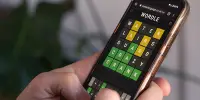Scientists have created a miniature wind turbine that scavenges the energy of the wind created by walking in a jolt. The ‘nano-generator’, Which is made up of two plastic strips in a tube, captures and stores wind energy to power electronic devices.
The Chinese engineers behind the device think that the abundance of air and cost-effectiveness should be used by newer smaller devices. Currently, the device can power up to 100 LED lights and temperature sensors. In Cell Reports Physical Science, Ya Young of the Beijing Institute of Nanoenergy and Nanosystems has announced a device that produces just 1 per second. meters (3. 3. miles) can operate at wind speeds. On steady days, the speed of a fast walker produces larger airflow than that. We once placed our nanogenerator in a person’s arm and the airflow of an oscillating arm was enough to produce energy, Young said in a statement.
High costs, resulting in, and ‘aesthetic pollution’ are still a problem for full-scale wind turbines that provide carbon-free energy sources. Most of the wind found on land is too gentle to push the commercial wind turbine blades, causing many to stand at the Researchers have now found a way to cut less powerful shrubs. Small-sized solar collectors have demonstrated the immense benefits of generating electricity where the connection is difficult. They have given millions of people access to safe and economical lighting for the first time, as well as ways to charge mobile phones. As solar dominates this market, many inventors think that there are no special arrangements for alternative methods of collecting energy from the environment, especially for places where there is very little sunlight in winter. Everything from the kinetic energy of precipitation to evaporation has been run.
In optimal winds, the B-Tent harvests 3.2 percent of the available wind power, far from the larger level wind devices, but is similarly distinguished by the quality of the smaller devices. Young hopes to increase it so that their fields can be placed on the roofs for electricity in entire buildings where solar is not unsuitable.
















